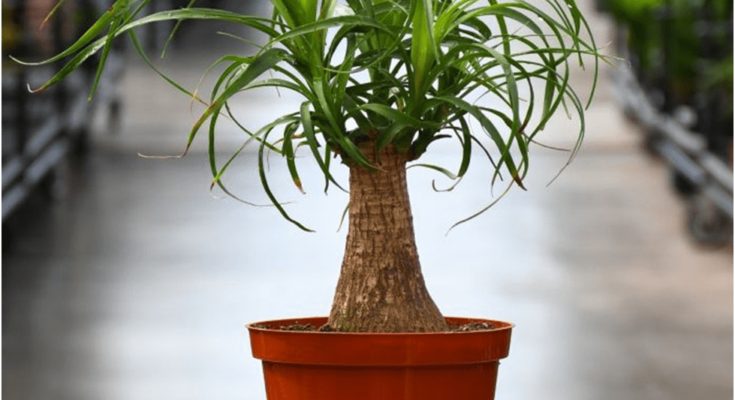Need a low-care houseplant that will nonetheless impress guests? The ponytail palm thrives in bright indirect light and is a great choice because of its entertaining, upward growth pattern. Such plants grow easily and add a colourful and quirky vibe to any room they are placed in. Ponytail palms are safe for canine and feline consumption, making them a popular option.
Since its name implies, this succulent is originally from Mexico, where it thrives in a dry, sunny climate. Ponytail palms, which may reach 30 feet in the wild and feature sprays of white blossoms, stay much smaller and more manageable when kept as houseplants. The plants take a few years to reach 2 feet. Our simple guide will teach you how to bring the lushness of the tropics into your home.
Preserving Plants
Treating the ponytail palm as a succulent is necessary due to its ability to store water in its bulbous stem. Water less frequently throughout the season when your plant is getting less light, and let the soil dry out entirely between waterings. After being in dry conditions for a while, your ponytail palm’s stem will thin and swell after it absorbs water again.
Ponytail palms grow rapidly in the spring, when fertilisation is most effective, and then slow down until the next spring. Normal houseplant fertiliser should be diluted to half power and given to your plant once per year in the spring.
Optimal climate conditions
Sunlight
Locate your plant where it will receive lots of indirect brightness (eight hours a day is ideal). Many growers, however, find success with this plant even in low-light settings, provided that it spends significant time outdoors in the summer. However, excessive direct sunshine on your ponytail hand can cause leaf burn.
Watering
Overwatering is the largest risk factor for ponytail palms, leading to root and stem rot. Overwatering causes the leaves to be brown and the stem to become mushy: If such things happen, cut back on your normal watering regimen until the leaves recover to their former state. Underwatering causes the palm’s leaves to dry to the touch, but this isn’t as prevalent as overwatering because the palm can last weeks without water. When the stem becomes mushy, and the leaves turn brown, you know it’s time to stop watering for a while.
Temperature
Ponytail palms, native to dry climates, can thrive in a wide temperature range. They are quite comfortable at daytime temperatures of around 90 degrees and nighttime lows in the 40-degree range. This is an excellent plant to adapt to the outside in the spring or early summer so that it may bask in the sun on your deck, patio, or fire escape once the weather warms up.
Propagation Instructions
- Collect a compact pot, some new succulent mix (or a mixture of equal parts fine sand and potting soil), a transparent plastic bag, some powder root hormone, and a set of clean, sharp gardening scissors.
- Next is to fill the pot with your chosen growing method and lightly wet the mix.
- Carefully excavate the area around the offset of your ponytail palm to reveal its root, and then separate it from the parent plant with a sharp, sterile blade. Do not forget to add any roots that the offset may have developed.
- You’ll soak the cut end of the offset in rooting hormone before planting it upright in the pot at a depth below the soil’s surface.
- Maintain the soil moist and put the plant in a comfy, indirect light place (but not soggy). Within a month, new roots will form from the offset.
- After fresh growth appears, the plant has anchored and moved to a more indirect light source. Treat it like you always have.
Wrap up
Given that not every garden centre around town carries the species of plant you need, you may need to shop around. The ponytail plant is among the most sought-after houseplants in modern society, and getting the plant online is easier.




